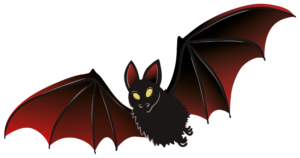









Bats, belonging to the order Chiroptera, are some of the most intriguing creatures in the animal kingdom. With over 1,400 species found worldwide, they exhibit diverse adaptations and behaviors that have captured the attention of scientists, researchers, and nature enthusiasts alike. These remarkable mammals play vital roles in ecosystems, from pollinating plants to controlling insect populations, and have earned a place of significance in both science and cultural narratives.
Bats are incredibly diverse, ranging in size from the tiny bumblebee bat, which weighs less than a penny, to the large flying foxes with wingspans of up to six feet. One of the most distinctive features of bats is their wings, adapted forelimbs to fly. Unlike birds, whose wings are composed of feathers, a bat’s wing is a thin membrane of skin stretched over elongated fingers. This unique structure enables bats to perform exceptional flight maneuvers, from hovering to rapid changes in direction.
Bats are integral to the health of many ecosystems. One of their most valuable contributions is their role as pollinators. Nectar-feeding bats help fertilize various plants, including many tropical fruits, agave (used to produce tequila), and cacti. Without bats, the reproduction of these plants could be severely compromised, affecting entire ecosystems and even human agriculture.
Moreover, bats play a crucial role in insect control. Insectivorous bats consume many insects every night, including agricultural pests like moths and beetles. This natural pest control service saves farmers billions of dollars yearly in reduced crop damage and decreased reliance on chemical pesticides.
Bats exhibit a wide range of behaviors that have captivated scientists and observers. Some species are solitary, while others form colonies numbering in the thousands. A particularly remarkable behavior is echolocation – the ability of bats to emit high-frequency sound waves and listen to their echoes to navigate, locate prey, and avoid obstacles in complete darkness. This complex system allows bats to “see” using sound, and some species have developed astonishingly precise echolocation abilities.
Despite their importance, many bat species are facing serious conservation challenges. Habitat loss, human disturbance, climate change, and diseases like white-nose syndrome have led to declines in bat populations. White-nose syndrome, caused by a fungus, has decimated bat populations in North America by disrupting their hibernation patterns and causing mortality. Conservation efforts are essential to protect these vital creatures and their supporting ecosystems.
Bats have long held a place in human culture and folklore. Often portrayed as mysterious and nocturnal, bats have been associated with superstitions and myths. In various cultures, bats symbolize everything from luck and rebirth to death and darkness. They’ve also been featured in literature and popular media, contributing to their mystique.







Leave a Comment